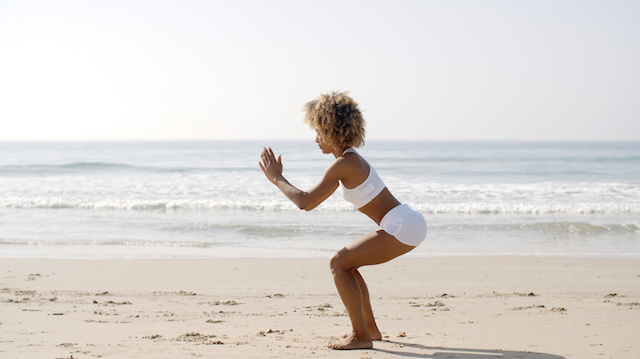
Squats have been around for a long time in the exercise world and we have to admit they are a little boring. There is nothing flashy about squats and many people may choose to forgo squats in favor of other exercise methods.
But if you want a powerful way to increase your fitness level fast, then you might want to rethink the idea of using squats. It turns out, squats are one of the easiest and fastest ways to improve your fitness level.
Here are seven reasons why you might want to start doing squats again:
Squats use the whole body
Squats are amazing for the leg and glute muscles, but squats also benefit other areas of the body when done properly. Squats trigger a release of testosterone as well as the human growth hormone, which improves muscle tone throughout your body. If you are a woman, don’t fear the word testosterone. Women produce testosterone naturally as well as men, just in smaller amounts. Testosterone can provide many benefits for both men and women.
Squats encourage balance
Your legs are responsible for most of your balance and mobility. Unfortunately, legs are also one of the first muscle groups to deteriorate as we age, which makes maintaining leg mobility a priority for our exercise routines. Since squats require balancing techniques, they are also beneficial in reducing your risk of bone damage or a fall.
Squats are used in real life
Some exercises that we do are more for aesthetics than function. Huge arm muscles, for example, aren’t really necessary for most modern tasks. Squats, on the other hand, use a motion that we employ in everyday life. Squats are the simple action of standing up from a squatted position. Many daily activities, from playing with kids to picking up mulch for the lawn, require this simple movement.
Squats encourage fat-burning
All exercises encourage the loss of fat. Since squats use a large portion of our total muscle groups, they are more effective at burning fat than exercises that use a small number of muscles. The more muscle strength you have, the easier it is to burn fat faster.
Squats make other exercises easier
Squats strengthen your jumping and running muscles, which makes squats a popular exercise with runners, sprinters, hurdlers and high jumpers. A 2008 study published in the British Journal of Sports Medicine linked squat exercises with better athletic performance overall.
Squats can reduce injury risk
 When you have strong connective tissues, your injury risk drops. Squat exercises strengthen connective tissues, joints and ligaments, which are often injured during other exercises. Squats are an easy way to strengthen these weaker parts of the body to prevent injuries.
When you have strong connective tissues, your injury risk drops. Squat exercises strengthen connective tissues, joints and ligaments, which are often injured during other exercises. Squats are an easy way to strengthen these weaker parts of the body to prevent injuries.
Squats reduce constipation
Opening the pelvis and sitting in a squat position is ideal for human waste removal. Modern toilets do not allow for this natural position, making constipation more likely. Squats help move waste through the intestines and reduce the risk of intestinal blockages.
How to do a squat
Squats are easy to do wrong. If you do them wrong, it is possible to cause serious injury to your legs, connective tissues and back. If you are not sure exactly how to do a squat properly, enlist the help of a qualified trainer to show you the correct form.
Below is a brief overview of how to do a squat correctly:
- Stand with your feet slightly wider than shoulder width.
- Keep your back relaxed and your knees over your feet. This may make you feel like you have to bend your knees out slightly.
- Bend your knees, ankles and hips slowly down and back keeping your knees over your ankles, not passing your toes.
- When your thighs are parallel to the floor, hold the position.
- Rise up slowly.
It is best to repeat 20 times per set and do two to three sets a day, three times a week. You may have to start out doing only five squats per set, but you will quickly be able to increase the number.
Adding squats to your exercise routine is an easy way to improve your overall fitness level with an exercise that has practical applications. Try adding squats to your exercise routine this week and watch your fitness level improve.
—The Alternative Daily
Sources:
http://www.ncbi.nlm.nih.gov/pubmed/24276305
http://bjsm.bmj.com/content/38/3/285.abstract

